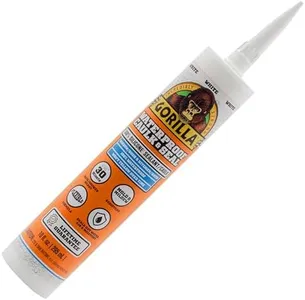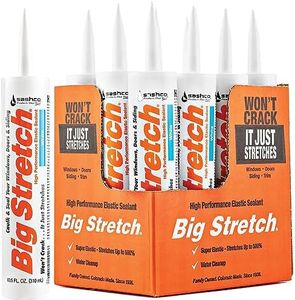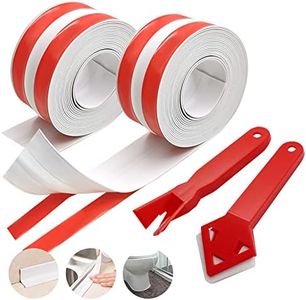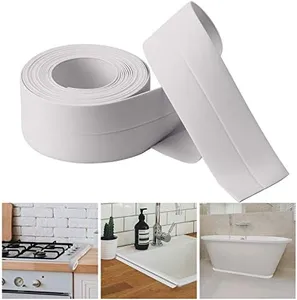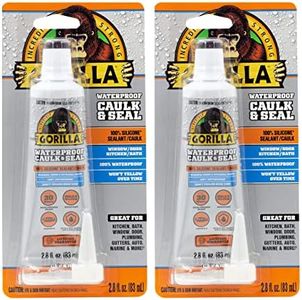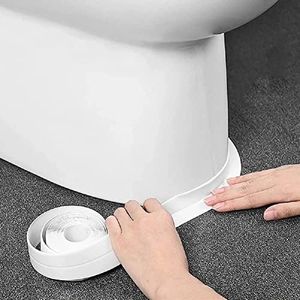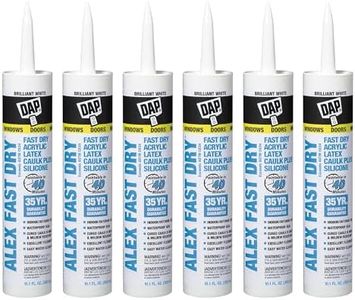We Use CookiesWe use cookies to enhance the security, performance,
functionality and for analytical and promotional activities. By continuing to browse this site you
are agreeing to our privacy policy
10 Best Mildew Resistant Caulk
From leading brands and best sellers available on the web.Buying Guide for the Best Mildew Resistant Caulk
Choosing mildew-resistant caulk is essential for areas where moisture is common, such as bathrooms, kitchens, and laundry rooms. The right product helps keep the area looking clean and prevents health issues related to mold. The best approach is to consider where you'll use the caulk, what surfaces you'll be sealing, how easy it is to apply and clean, and how long you expect it to last. Understanding key features can help you find a caulk that suits your needs and will make your space look and function better for years.Mildew ResistanceMildew resistance indicates the caulk's ability to prevent the growth of unsightly and potentially harmful mildew in damp conditions. This is crucial for areas exposed to water, like around tubs, sinks, and showers. Some caulks are specifically formulated with additives to guard against mildew, which helps keep sealed joints cleaner for longer and avoids health concerns. If you're sealing areas subject to regular moisture or humidity, opting for high mildew resistance is important. For drier spaces, this feature is less critical, but in bathrooms and kitchens, always choose caulk that specifically advertises mildew resistance.
Material TypeCaulks come in several material types such as acrylic, silicone, latex, or blends. Acrylic and latex caulks are easy to use and clean up with water, but silicone-based caulks offer superior water resistance and flexibility, making them more suitable for wet environments. Understanding which surfaces you’ll seal is important—silicone adheres well to glass and tile, while latex goes on painted surfaces. When choosing, consider where you’re applying it; for the wettest areas, go for silicone or a specialized mildew-resistant blend. For easier application and painting, latex or acrylic may be a good match.
PaintabilityNot all caulk can be painted over. If you want the final seal to match the rest of the wall or trim, ensure you pick a paintable caulk. Acrylic and latex caulks are typically paintable, while pure silicone usually can’t be painted. If color coordination matters or you want to conceal the seal, choose paintable caulk. If you don’t mind the visible bead or choose a matching color, silicone’s durability can be a higher priority.
Flexibility and Movement CapabilityFlexibility refers to how well the caulk can move with the surfaces it's sealing. This matters especially in areas with temperature changes or where surfaces expand and contract, like around tubs or between walls and counters. Caulks labeled with high flexibility ratings are better at handling movement without cracking. For joints likely to experience movement, such as where different materials meet or areas with frequent use, pick a caulk described as flexible or designed for high movement. For more static gaps, basic caulk often suffices.
Ease of Application and CleanupSome caulks are easier to apply smoothly and clean up than others. Water-based caulks like latex are generally more forgiving for beginners, allowing you to clean up mistakes with a damp cloth and shape the bead easily. Silicone requires mineral spirits for cleanup and can be a bit harder to apply neatly. If this is your first time or you want a hassle-free application, look for products highlighted as user-friendly or easy to clean up. If you’re more experienced or need the strongest seal possible, you can consider products that may be trickier to use but offer better performance.
Drying and Curing TimeDrying or curing time indicates how long it takes for the caulk to set and become fully effective. Some caulks become touch-dry quickly but need several hours to days to cure before they're water resistant. This matters if you need to use the area soon after sealing. Quick-drying caulks are great if you're short on time, while those with longer curing times often provide superior durability. Check the product details and pick one that matches how soon you’ll need to use the sealed area.
